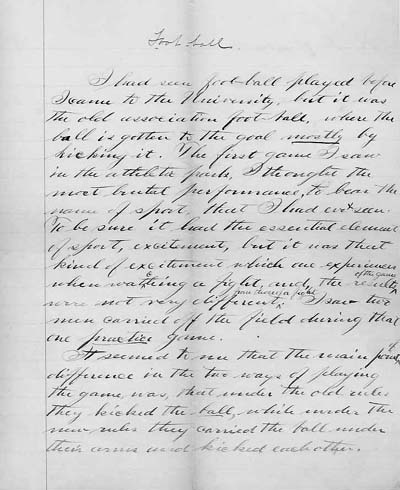|
<Primary Source Home
<Module 1 Home
Module 1: What are primary sources?
|
If you are seeking to learn about the past, primary sources of information are those that provide first-hand accounts of the events, practices, or conditions you are researching. In general, these are documents that were created by the witnesses or first recorders of these events at about the time they occurred, and include diaries, letters, reports, photographs, creative works, financial records, memos, and newspaper articles (to name just a few types).
To give just one example of a primary source for a particular research question: If you were interested in learning about how the Freshman Rhetoric course at UIUC was taught in the late 19th century, the papers students wrote for that course would be considered primary sources for this research project, because they were created at the time of the institutional practices in question by direct participants in those practices.
Primary sources also include first-hand accounts that were documented later, such as autobiographies, memoirs, and oral histories. However, the most useful primary sources are usually considered to be those that were created closest to the time period you’re researching.
p. 1/15
|

W.A. Brubaker, a UI student from 1893-95, wrote this essay discussing the difference between American football and soccer for the introductory Rhetoric course he took in 1894. (Click for larger image).
Student Affairs
Student Notes
W.A. Brubaker Papers, 1894-1895
Record Series 41/30/30
|